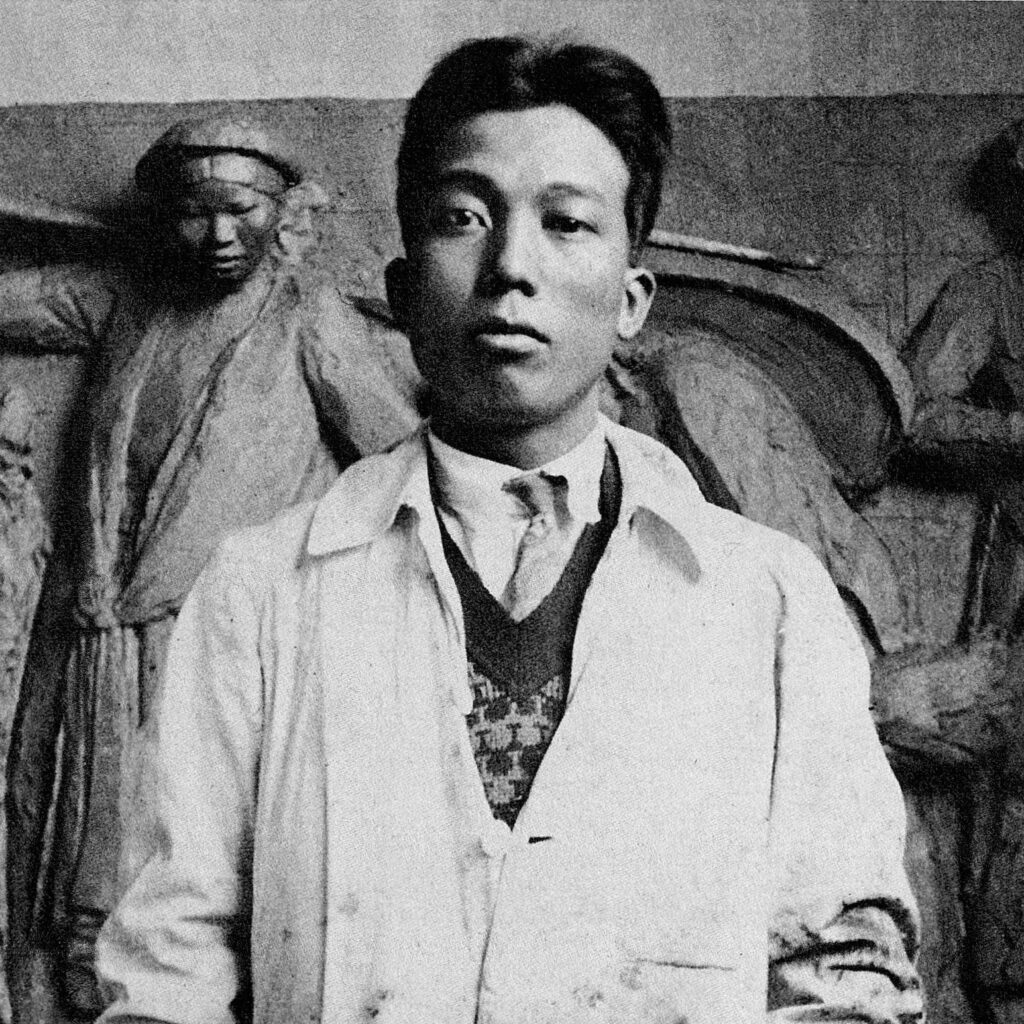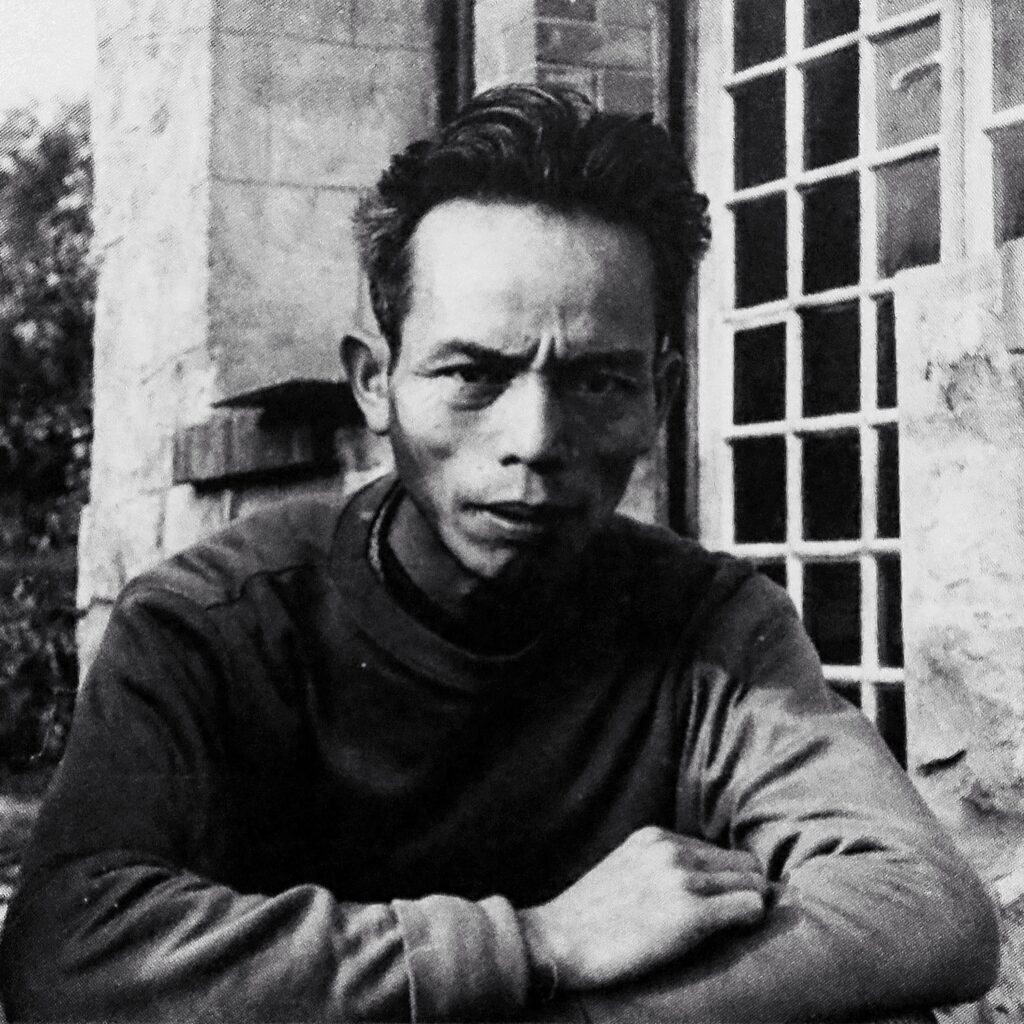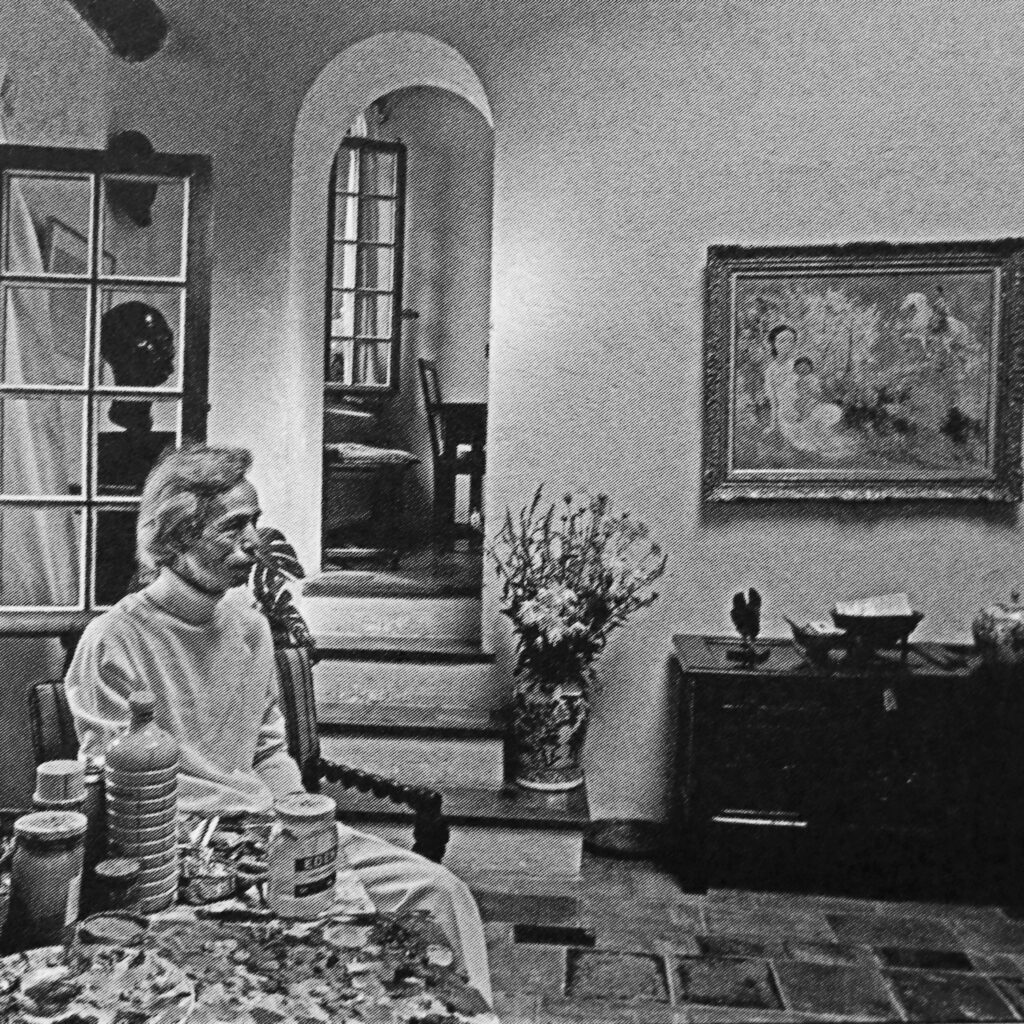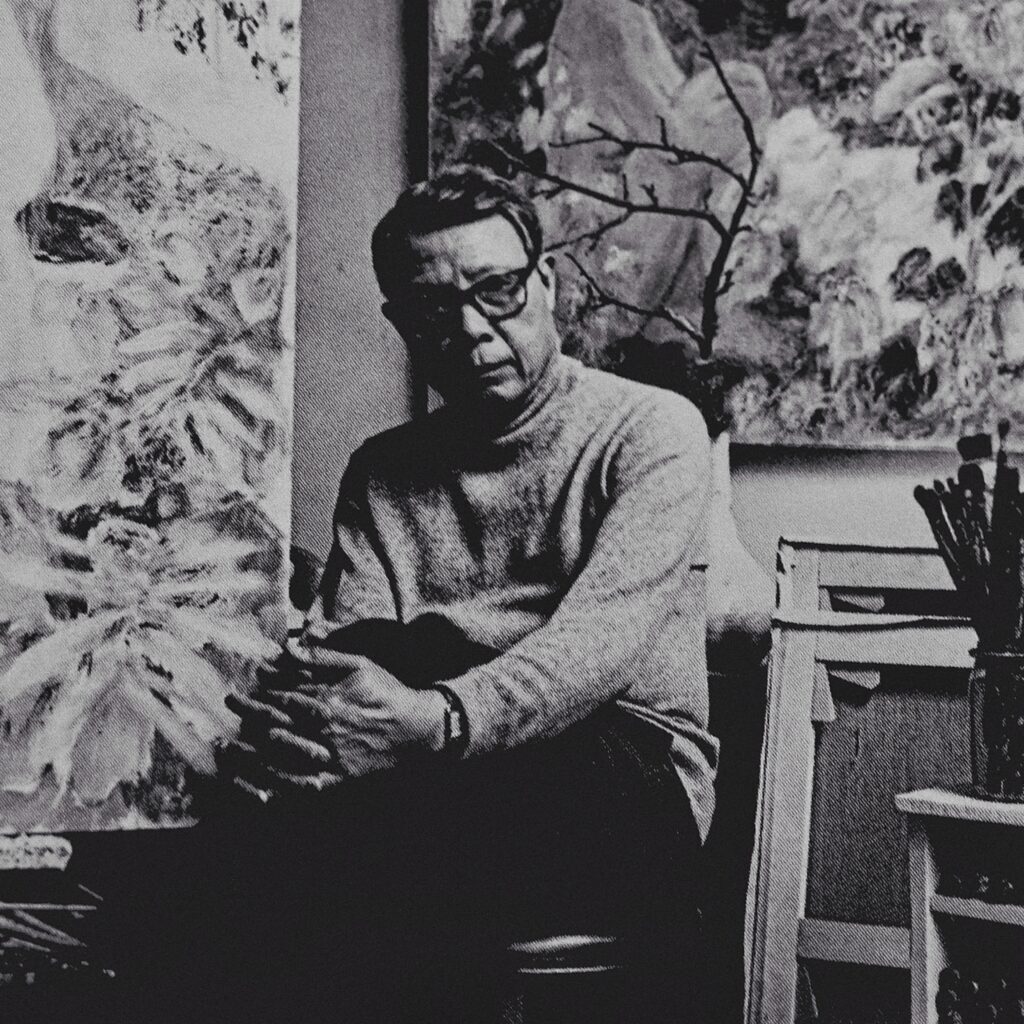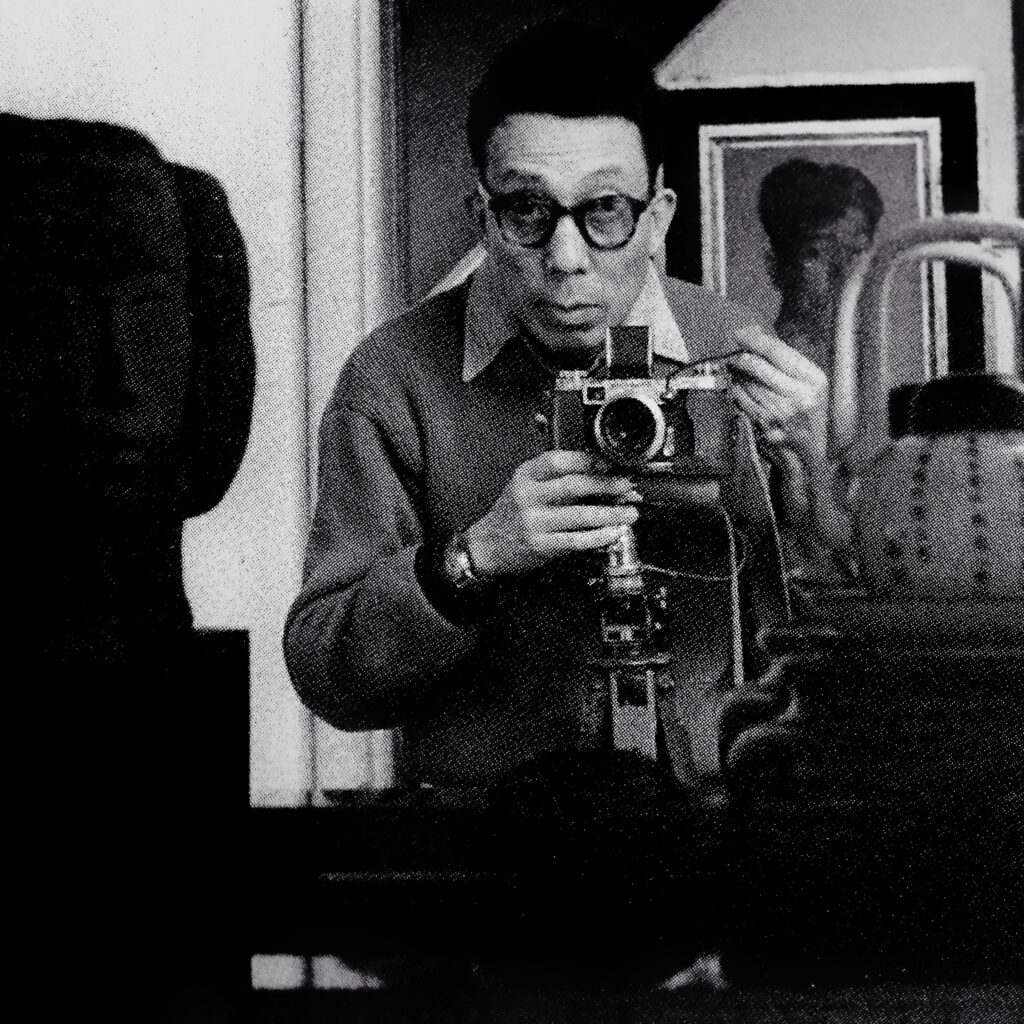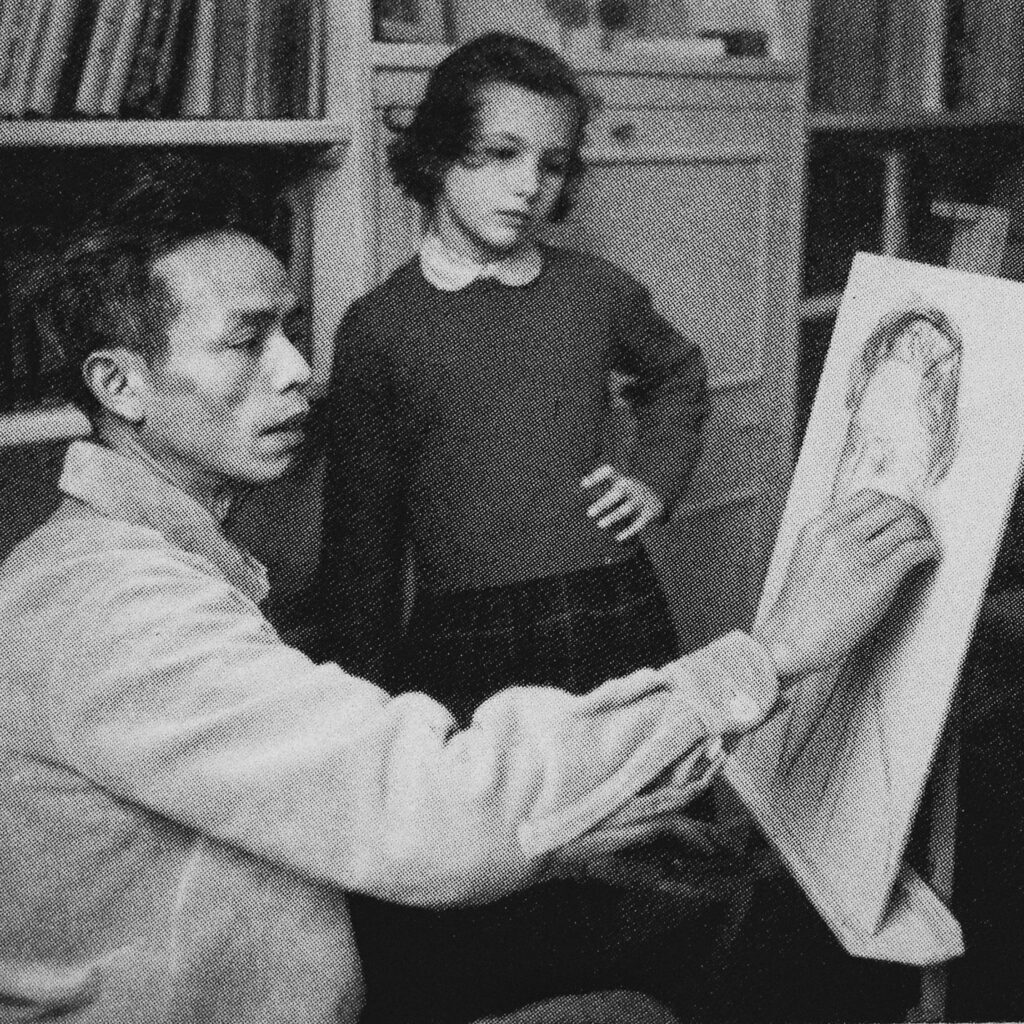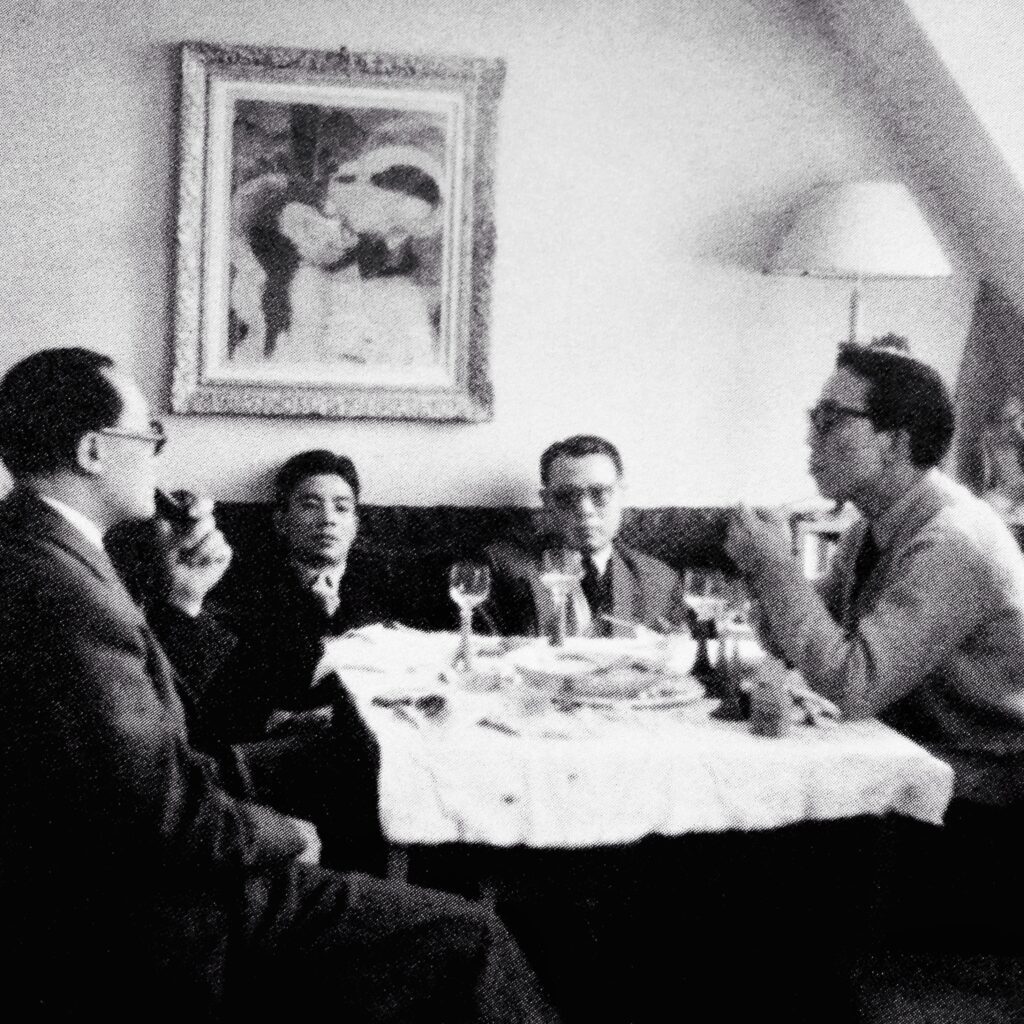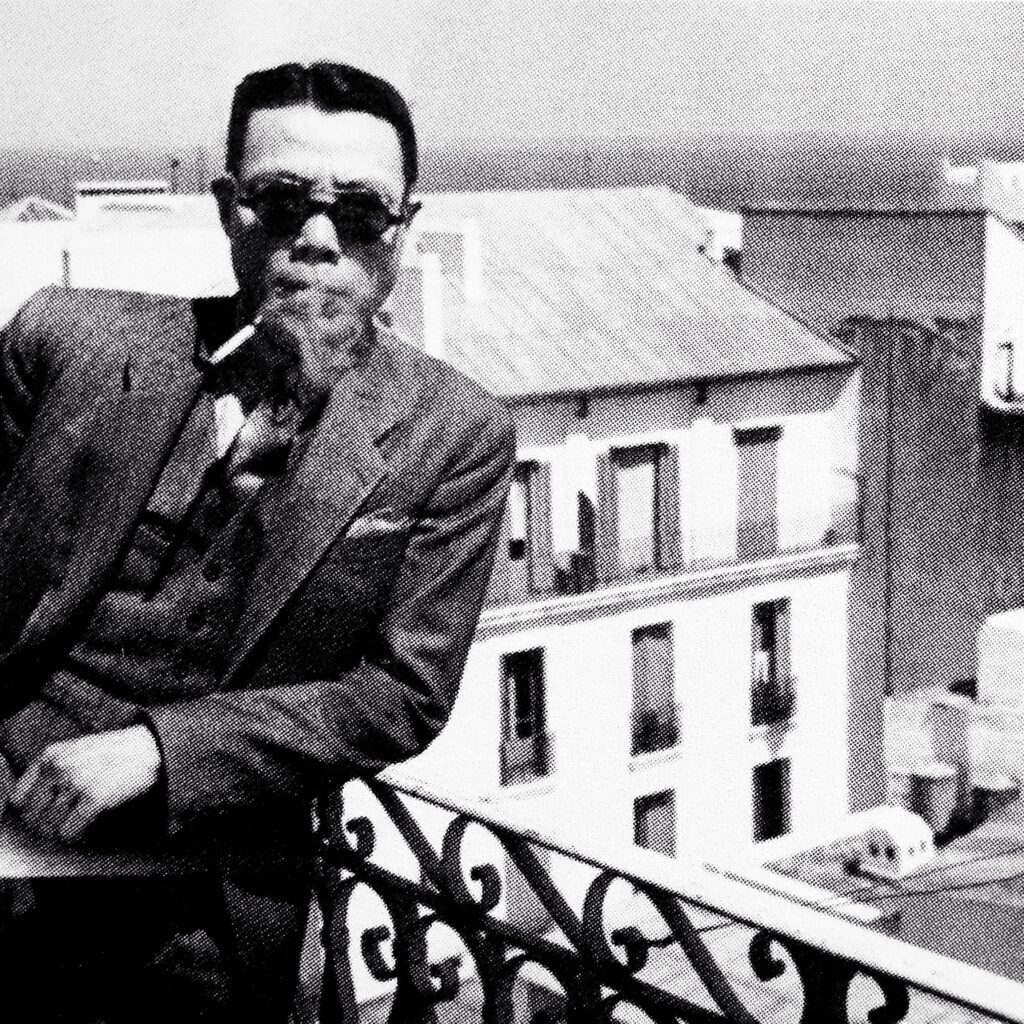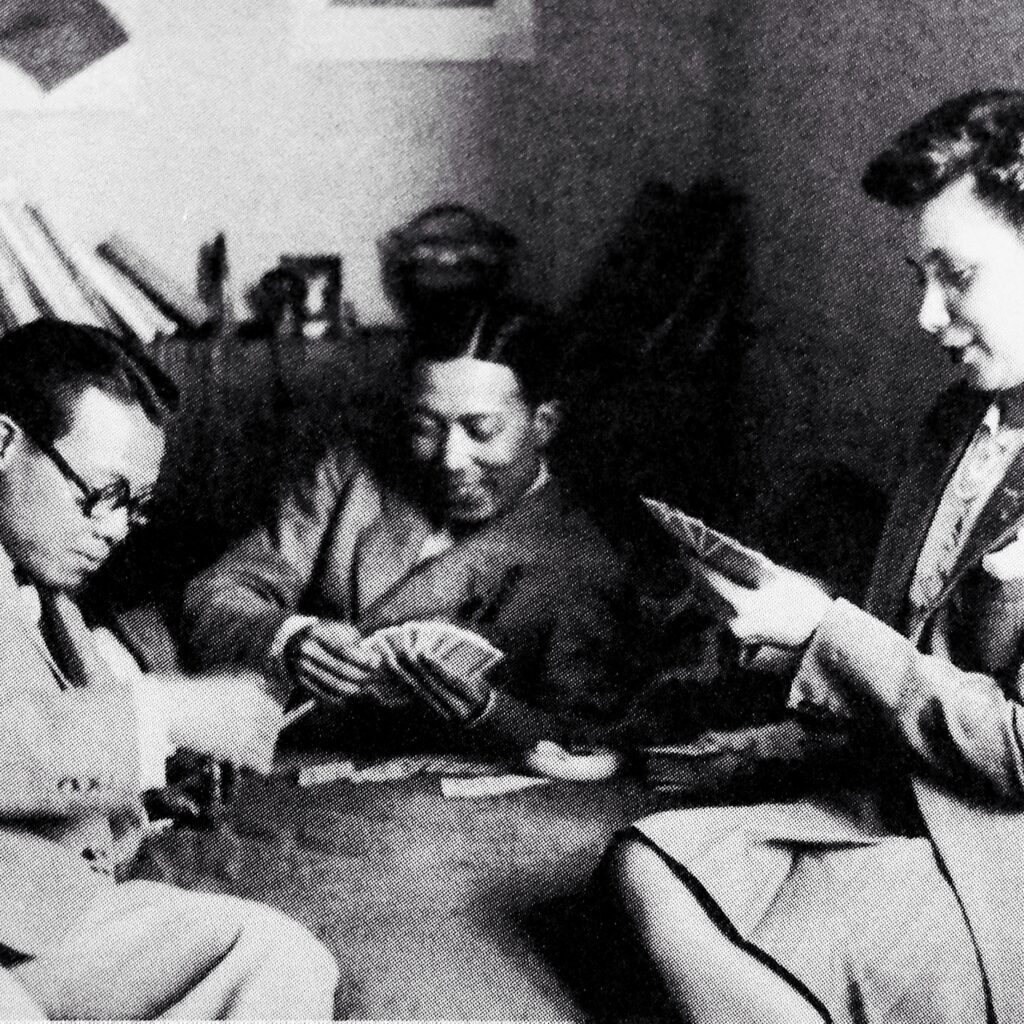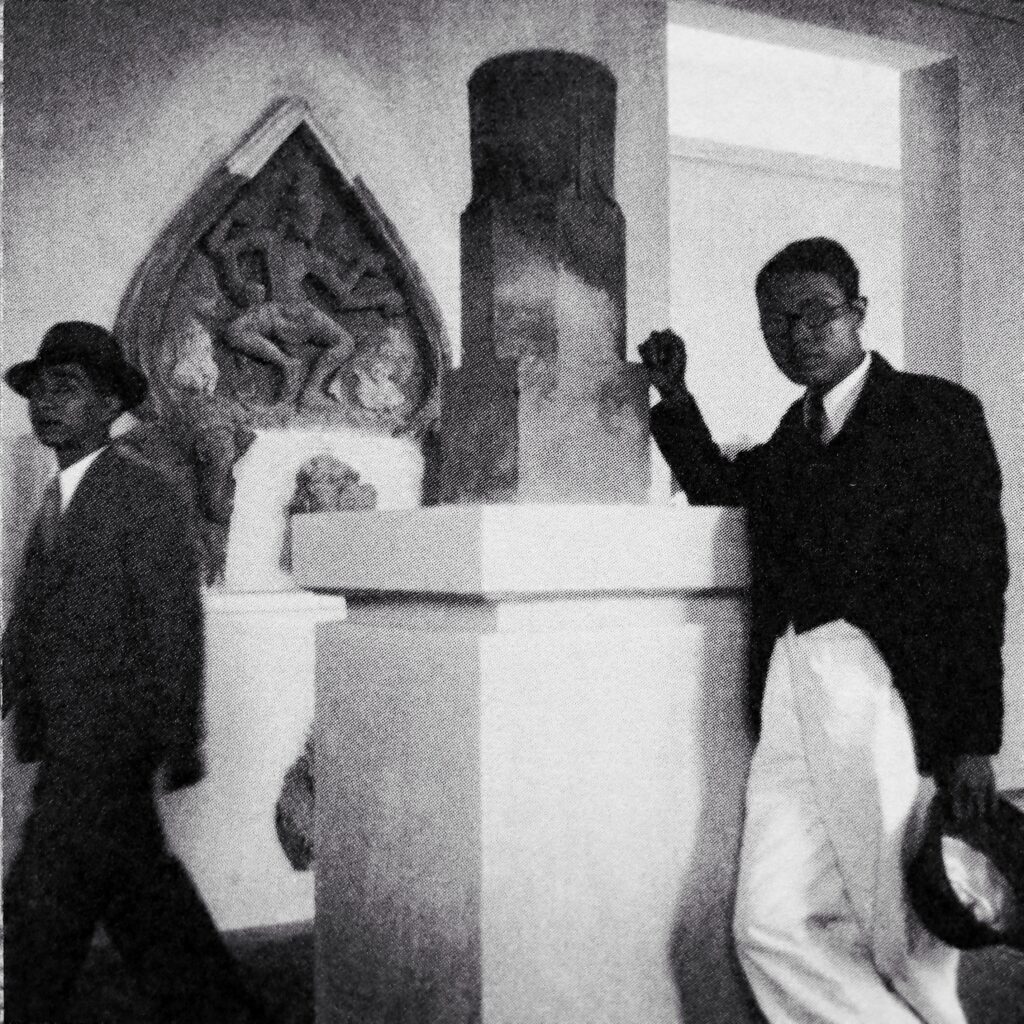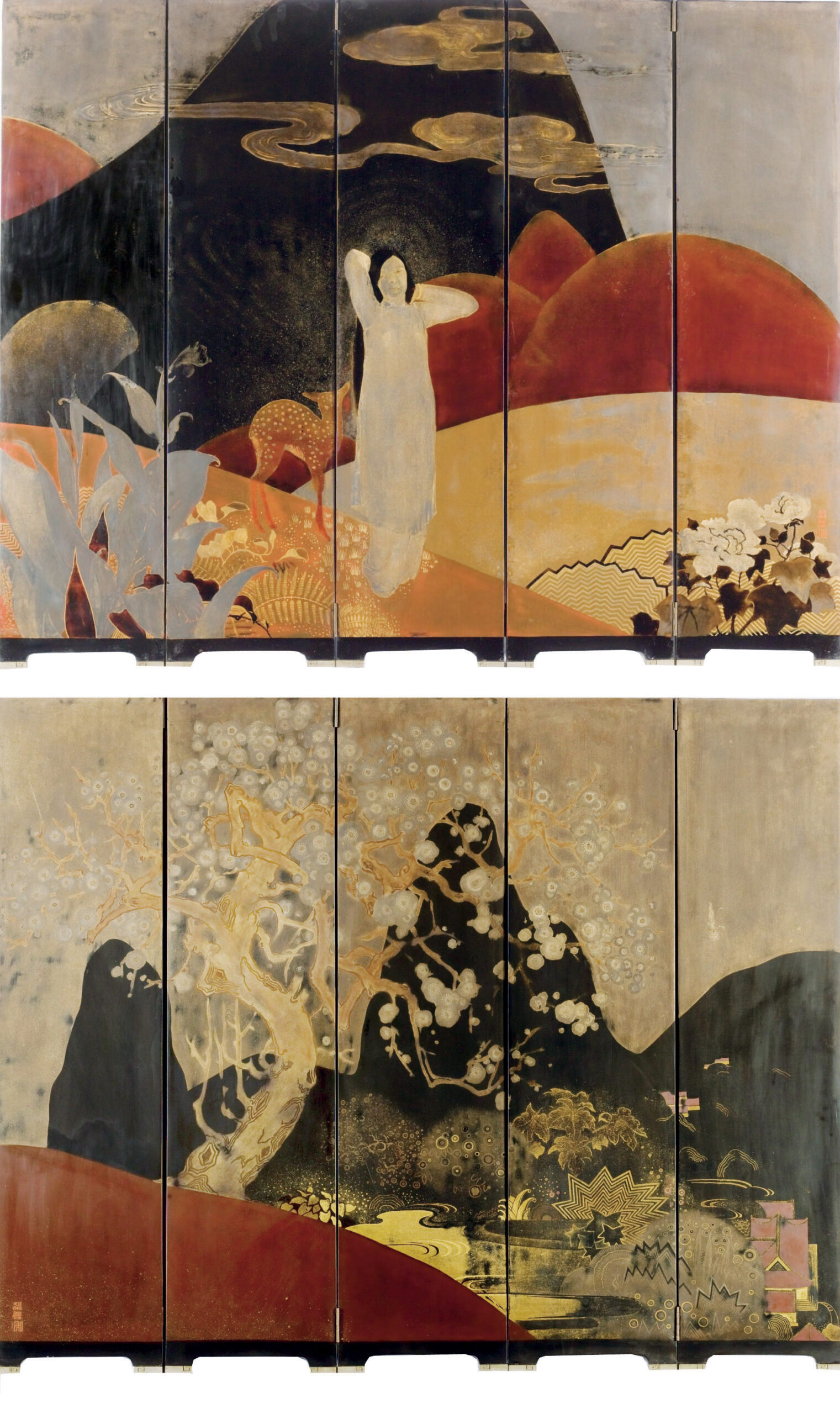
Le Pho (Vietnam, 1907-2001)
Les Èternitès (Eternities)
signed 'Le Pho' and signed again in Chinese (lower right on front of panel) and signed 'Le Pho' and signed again in Chinese (lower left on back of panel)
lacquer on panel
40 1/8 x 49¼ in. (102 x 125 cm.)
Executed circa 1935
Provenance
Gift of the artist to Madame O. Tholance, spouse of Monsieur A. Tholance, Rsident Suprieur de France au Tonkin.
Thence by descent to the present owner, the grandson of Monsieur and Madame Tholance.
LE PHO - LES ÉTERNITÉS (ETERNITIES) LACQUER
Works on lacquer by Le Pho are extremely rare.
In the famous 1931 Colonial Exhibition in Paris, Le Pho exhibited a folding lacquer screen entitled Paysage Tonkinois, Sai-Son, Province de Son-Tay ("Tonkinese Landscape, Sai-Son, Son-Tay Province") that was illustrated and discussed in the book Trois Ecoles d'Art de l'Indochine (Three Schools of Indochinese Art), Hanoi,1931 in which it was commented that the versatility of the artist was further testified with his ease with the very demanding lacquer technique and the ability of the artist to create something original and beautiful with the medium.
Comparing the present lot, Les Èternitiès (Eternities) to the Tonkinese Landscape which is an earlier work, the maturity of the artist is evident in this composition. In this extremely polished work, the painter depicts a surreal landscape that has an almost phantasmagorical quality: by adopting the unreal as the topography, and using the "middle lands" in the distance to provoke and entice, Le Pho seemingly suggests any inhabitant of the landscape would be endowed with a mixed emotions of fascination and fear. It is almost like a world that had existed in words and is now transformed into a vision. The vegetation in the foreground serves as focal point for a viewer and encourages the view to go beyond whilst the river and mountain are depicted in a nearly abstract manner, continued to hold the gaze of the viewer. Finally, the depiction of the rice paddy field completes all the quintessential elements of a Vietnamese landscape and in this regard defines the identity of a Vietnamese artist in that epoch. The folding screen offers a delectable and sumptuous view of Le Pho's painterly universe.
The artist has intentionally chosen a predominant dark tone for the work which is evocative of the poetic words Mrs. de Thanh-Quan, born in Nghi-Tam in the 19th century near Hanoi -
"The shadow of dusk stretches across the immense sky
In the distance the sound of a conch replies to the call of a drum"
"Rustling, the forest of pines welcomes tired birds".
This sublime piece, executed circa 1935, was given as a wedding gift to the original owner and has been well-preserved within the family collection until today. It is a great honour for us to present such a work.
Jean-François Hubert

